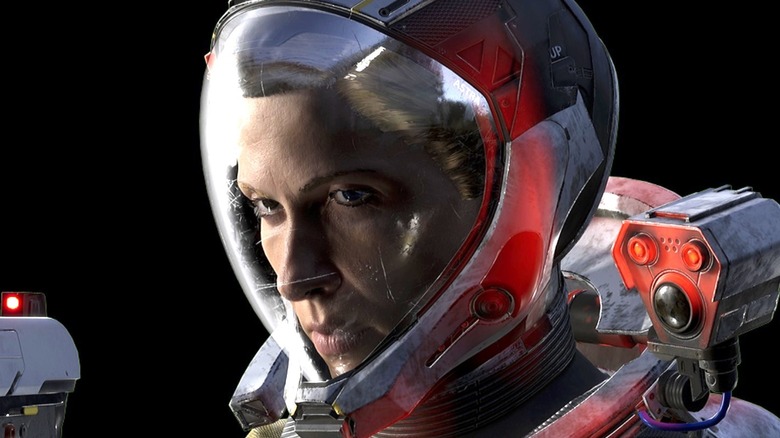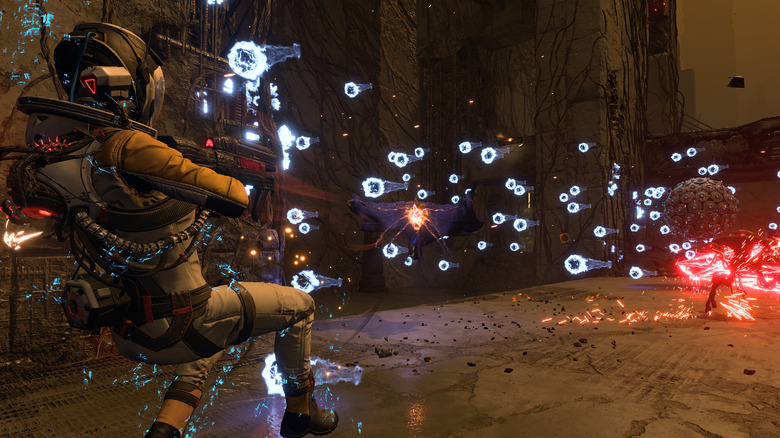This Returnal Theory Changes Everything You Know About The Game
With "Returnal" getting close to a month past its release date and rapidly outselling its competition, many gamers have started unlocking its mysteries and logging some unbeatable runs. However, the time-bending, reality-shifting shooter doesn't exactly reveal a straightforward narrative, even after players put in the 20-30 hours needed to beat the game. However, one convincing (and quite complex) fan theory flips the entire timeline of the game on its head.
Reddit user SomeoneGMForMe has posted a detailed analysis of "Returnal" which integrates some of the game's familiar-feeling mechanics into a whole new understanding of the confusing events surrounding Selene's exploration of Atropos. "Returnal" is a roguelike game, which means that whenever Selene dies, she starts back from the beginning, creating what the story presents as a time loop. The game doubles down on this by looping all three acts into a repeating arc. Since the plot of "Returnal" depends on a fluid understanding of time, SomeoneGMForMe says, "there's no reason to believe that it is presented to us in anything resembling a chronological order."
This becomes even more important when considering the traumatic events in Selene's past, which are revealed during short flashback segments in between acts. Here is how SomeoneGMForMe's theory rearranges everything players thought they knew about "Returnal."
Major spoilers ahead for "Returnal."
Does Returnal truly begin in Act 2?
Dedicated "Returnal" players should check out the full analysis SomeoneGMForMe has laid out. However, the most crucial idea it presents is that the conclusion of Act 1, in which Selene finds the White Shadow signal, returns to Earth, and dies, is the game's real ending. Act 2 then follows Selene defeating a monster below the surface of Atropos, reveals that her mother was paralyzed in a car crash, and then forces Selene to relive the tragic death of her own son in a car crash. According to SomeoneGMForMe's theory, Act 2 is actually the prologue to Act 1. Finally, Act 3 re-contextualizes the game's earlier scenes and indicates Selene's responsibility for the tragic events in her past.
The key to understanding this theory is viewing every environment as a metaphor for the trauma Selene has experienced on Earth, rather than as a literal, physical place. For instance, the dark and rainy aesthetic of Biome 1, SomeoneGMForMe says, represents the moments before the crash shown at the end of Act 2. Biome 2, which uses a blood-red color palette, expresses the pain she felt after the crash. The derelict citadel of Biome 3 represents her feelings of guilt following the accident. The chaotic Biomes 4 and 5 deal with the collision that paralyzed her mother, while Biome 6 brings the story full circle by representing the actual moment that Selene's son died.
SomeoneGMForMe's theory allows for some loose ends, but it's a fascinating take on an open-ended story. Players will just have to keep exploring the nested time loops of "Returnal" to see if they can uncover any more details.


